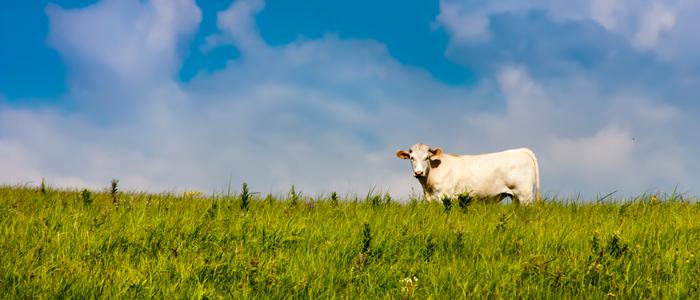HOW DO THEY COMPARE?
It’s not surprising to hear that a cow’s nutrition impacts the molecular makeup of its beef, milk, and other by-products. So it goes without saying that the quaity of your protein is heavily influenced by how the cows are raised.
WHAT IS WHEY PROTEIN?
To understand the importance of grass-fed over grain-fed, it is important to first understand what whey protein is. Whey protein is a by-product in the production of cheese (also the liquid that is often found on top of yoghurt). Interestingly, it was considered waste until the 1970s when its use as a dietary protein was first realized. Whey protein concentrate varies in makeup, ranging anywhere from 30-80% protein (the rest is made up of fat and carbohydrates). Whey protein isolate removes all the fat and lactose, leaving upwards of 90% as protein. New Zealand grass fed Whey concentrates naturally have one of the highest protein percentages of any whey in the world at between 75 -80%.
GRASS-FED VS. GRAIN-FED
Outside of New Zealand, and particularly in the USA, cows are matured in what are called CAFOs (Concentrated Animal Feeding Operations), which are feedlots that mass feed cows, mostly with grains of soy and/or corn. Most CAFOs are unsanitary, which require the cows to be injected with antibiotics to avoid sickness. Additionally, the use of growth hormones to speed up the maturation of the cow is a practice commonly used in the US.
In New Zealand cows are predominantly raised in a more traditional manner, free to graze the fields and eat naturally grown grass. This is possible in New Zealand as it requires lots of fertile land and is far superior than those of a feedlot.
The primary nutritional difference comes down to:
1/Grain fed cows typically have more saturated fat and monounsaturated fat, the good kind that lowers cholesterol, than grass-fed cows.
2/Grass-fed contains almost five times as much Omega-3 as grain fed (made up of DHA and EPA) omega 3s are fantastic fatty acids that are vital to proper cognition and mood, as well as decreased risk of heart disease.
3/Grass-fed also contains twice as much CLA (conjugated linoleic acid) as grain fed, which is associated with reduced body fat.
4/Grass-fed contains more vitamin A and E, and cancer-fighting antioxidants such as glutathione (GT) and superoxide dismutase (SOD).
GRASS-FED BENEFITS IN PROTEIN
The added nutritional benefits are passed down through fat content. The higher the amount of fat in the protein, the more essential it is that the protein is sourced from grass-fed cows. All protein, both isolate and concentrate, contain residual fat, with more fat coming from concentrate.
Grass-fed protein is indisputably superior to grain-fed protein on a nutritional level. The benefits of grass-fed come down to improved amino acid and immune support nutrients, as well as healthy omega and CLA fats.
At Scorpion Supplements, we believe that supplements should not only taste great, but be of the highest quality available. Which is why we only use premium 100% NZ grass fed whey. Be sure to check out our huge range of locally made protein powders!
https://scorpionsupplements.co.nz/products/scorpion-whey-protein-2-x-1kg/


